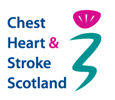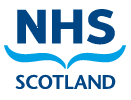Mucolytics - Nebulised Saline
Saline
Saline is a solution of sodium chloride (0.9%) and water, sodium chloride is also known as salt, therefore this solution can be considered “salty water”. The solution is prepared with sterile medical grade sodium chloride.
The saline solution for use in respiratory patients is converted into an aerosol for inhalation. Inhaling the solution as a fine mist temporarily increases the liquid layer on the airway surfaces which allows secretions to be transported and cleared through the lungs. Saline solution prescribed by a medical professional can be used to prepare some other medication ready to be nebulised, for example inhaled antibiotics. It is unlikely that nebulised saline (0.9%) solution will cause any side effects.
Hypertonic Saline
Hypertonic saline can be used as a mucolytic to help mobilise secretions from the lower respiratory tract. Concentrations are higher than normal saline. It helps by temporarily increasing the liquid layer on the airway surface and reducing the thickness and stickiness of secretions, allowing them to be more effectively transported by the lungs and be coughed up.
Patients who would be considered suitable for hypertonic saline, usually after assessment by a specialist respiratory physiotherapist, should have a supervised challenge test carried out. There is a slight risk that some patients may develop bronchospasm when inhaling a hypertonic solution. Spirometry should be undertaken before and after a test dose.
Drug name:
- Nebusal® (7% solution).
- Mucoclear® (3 and 6% solution).
Side effects: Side effects are often temporary and reduce after a few doses.
- Reversible bronchoconstriction.
- Coughing.
- Hoarseness.
See the section on Nebulisers for more information.




